How To Grow Delicious Garden Peas
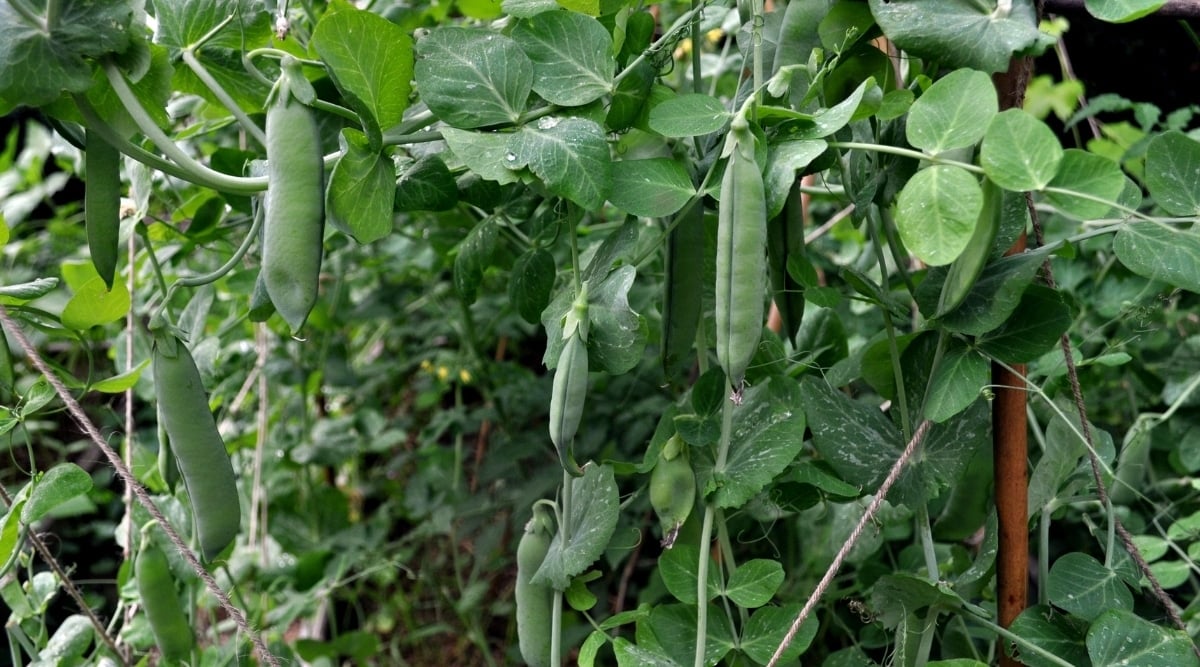
Table of Contents
Nothing tastes better than home-grown, sweet-tasting garden peas. The good news is they are very easy to grow them. They come in great varieties and can be grown indoors, outdoors, in gardens without a garden, and almost everywhere.
It is a kind of plant that gives you fruits many times after you’ve planted it. So, we won’t be wrong if we say peas are the plants that keep giving. If you are wondering how to grow garden peas, here is a guide for you to follow.
In this article, we talk about the process of growing peas and caring for them. Read further to get to know all details.
Basic Details About Garden Peas
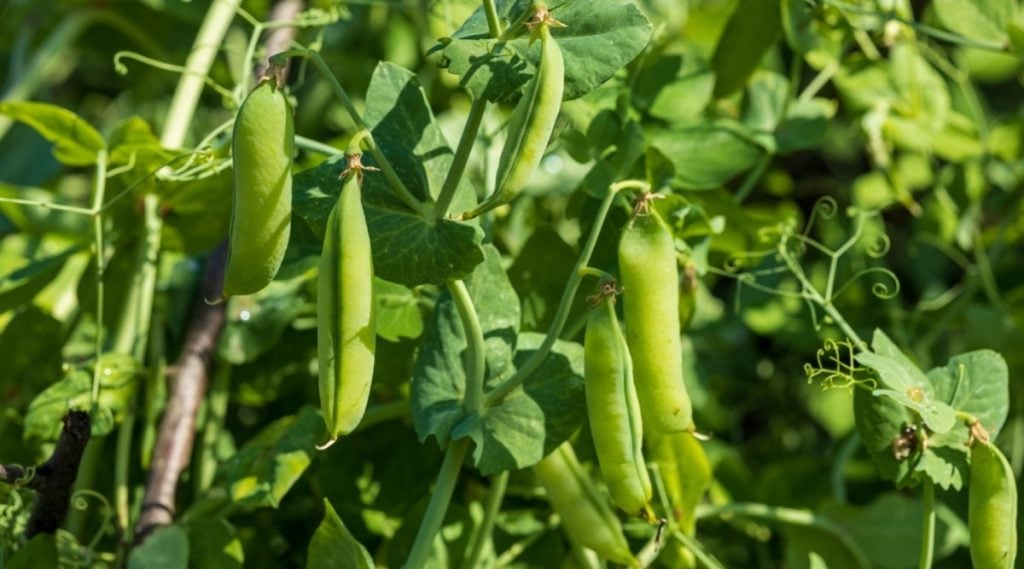
Garden peas are legumes that fall in the same family as beans, soybeans, chickpeas, peanuts, and lentils. Their plants come in both varieties, shrubs, and climbers. These plants, especially climbers, generally need support to grow.
They are weak-stemmed and have fruits in pods. Each pea grows about 6-10 peas in a pod, and the seeds are smooth and can even be eaten raw. These cool-season crops should be planted before the hot weather takes over.
There Are Mainly Three Types of Pea Variety that You Can Choose From:
1. Snap peas are peas that can be eaten raw. They are meatier in texture and can also be used for cooking. Their bush grows about 2-3 feet tall and is a great pea to grow in your garden.
2. Shelling pea is Another pea variety; these are the classic garden peas and every gardener’s first choice. They come in both bush and tall types and are easy to grow. These can also be eaten raw.
3. Snow peas are not shelling. Instead, they are served raw, and their pods are 2-3 inches with tiny seeds inside. The pods barely bulge in the shell and are available in both bush and tall varieties. Sometimes, Snow peas have fibrous strings that you should remove before eating.
How to Grow Garden Peas
There are a few steps that you have to follow in order to yield a great harvest from your pea seeds. It is easy to grow garden peas; follow these steps.
1. Choosing The Peas
Peas are an easy vegetable table to grow, but they come in different variations, making it important for you to choose what peas you want before starting the planting and growing process. There are garden peas, green peas, peas with medium and dwarf-sized plants, and many more details.
So, you have to make sure you are choosing the kind of peas after thinking it through. While most of them have similar growth patterns, it is important you make an informed decision. Once you have decided, you can buy seeds from a garden centre or an online seed supplier, depending on what is more feasible for you.
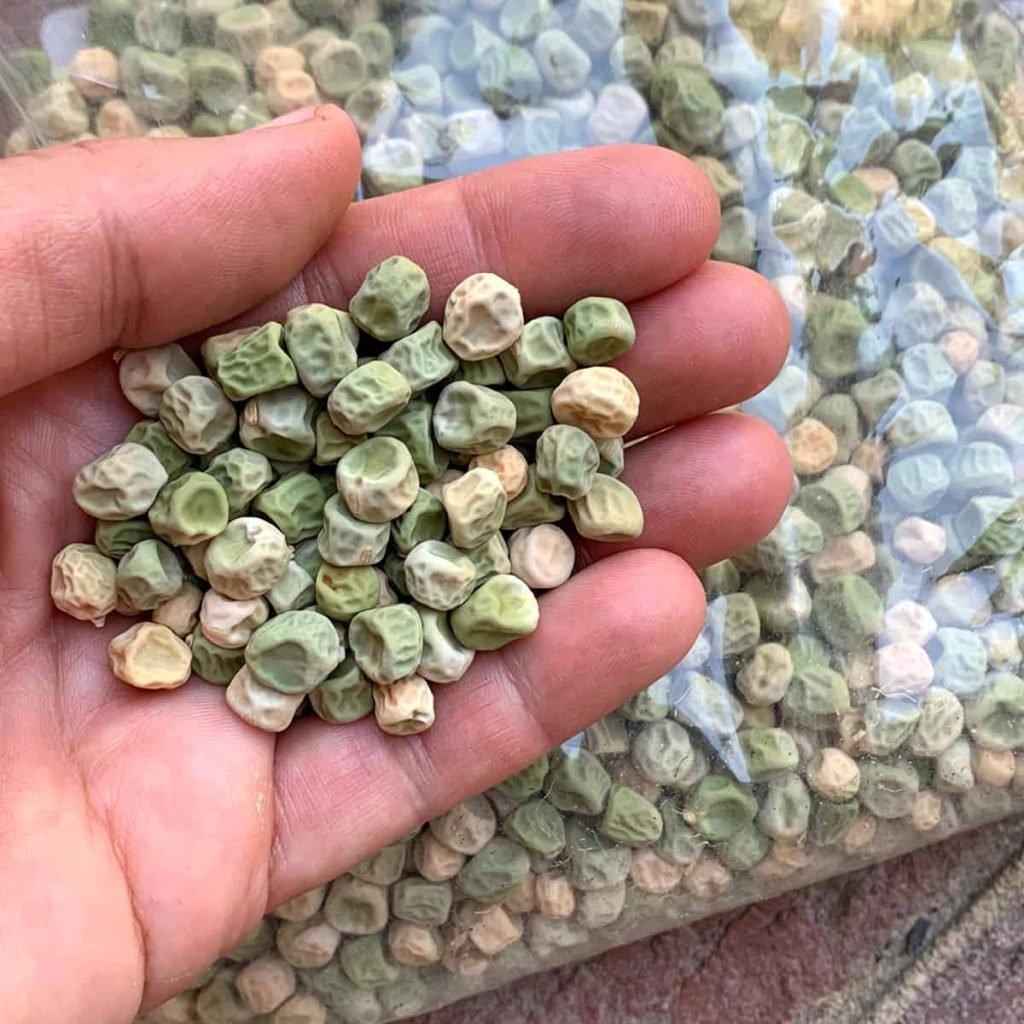
2. Prepare the Soil
The next step is to prepare the ground or soil in which you want to sow your peas. Peas generally like a sunny position and spots with good drainage. So, make sure you find the right place for it. As for the soil, it must be neutral or slightly alkaline. If your soil is acidic, you will have to treat it to get a good harvest.
To prepare your soil, weed it thoroughly. After this, fork in lots of garden compost. You should do it a few weeks prior to sowing your seeds. It will make it easier for you to grow your peas and harvest a good yield.
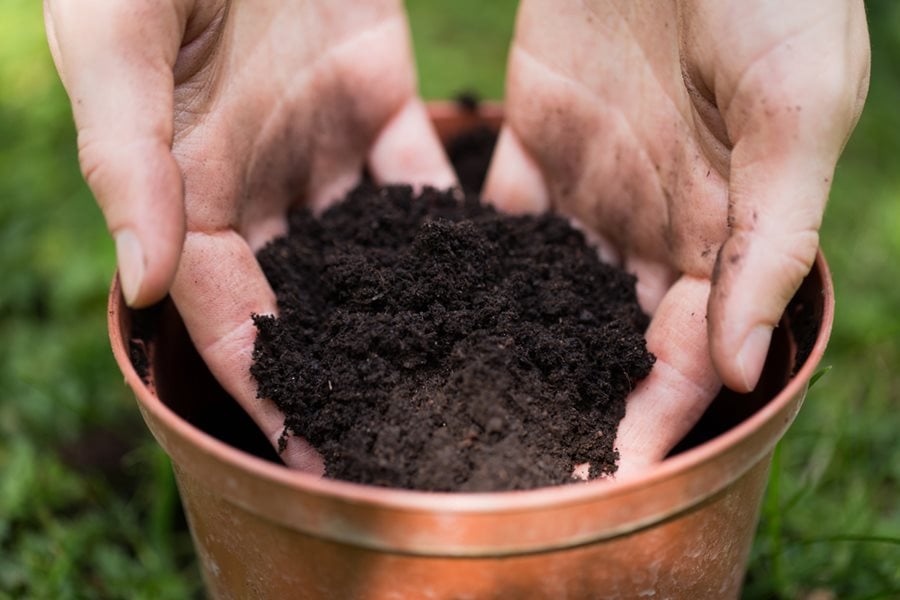
3. Sow Your Seeds
It is easy peasy to grow peas using seeds. The good news is peas can be grown anywhere, both indoors and outdoors, depending on the weather you want to grow them in. Here is how you do it in both spaces.
Sowing Seeds Indoors
If you plan to sow pea seeds inside, do it around February or March. This will give your seeds enough time to grow. If your soil is cold and wet because of the weather, it will be difficult to grow them outdoors. It is a wise idea to grow peas indoors in winter.
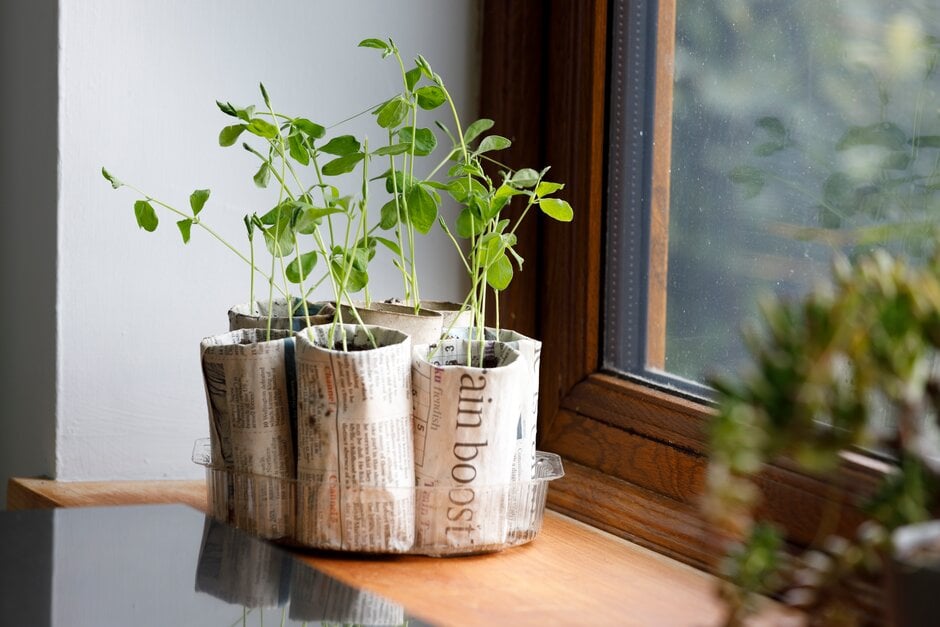
To do this, fill your modular trays, cardboard tubes, and small pots with multi-purpose compost. Then sow up to three seeds in all the banks or tubes. Make sure you sow them about 5 cm deep in the compost. You can also sow peas along the length of the guttering, filled with compost.
They must be sowed about 7.5 cm apart in double rows. This will make it easier for you to transplant whenever you want to. The best time to sow peas should be planted in March and April if you are planting indoors.
Sowing The Seeds Outdoors
The best time to start growing your peas outdoors is March to June. Since pea seeds do not germinate in cold conditions, make sure your soil is about 10 degrees Celsius before you do any planting. If it is not warm by March, warm it with polythene sheeting or cloche.
Once you have sown your seeds, cover them with fleece to provide them with a little more heat. While peas love cool weather, they do not like frost; avoid sowing in damp soil.
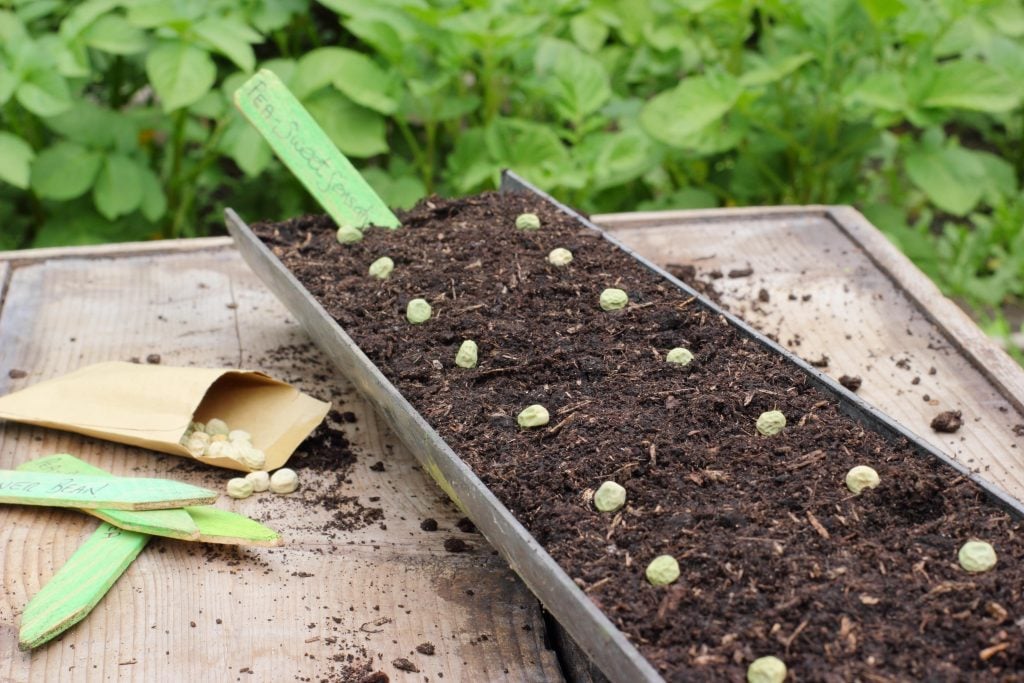
If you are using taller varieties, sow seeds about 7.5 cm apart in a single row or 30 cm apart in a double row. Be generous with the spacing between the rows because it would give you better air circulation and your seedlings better space to grow. However, the shorter variety needs a little less space. So, you can sow them in triple rows, about 7.5 cm apart. After this, just cover it with soil and water it well.
If you want to harvest all summer, you must sow several batches over the whole season.
4. Planting
March onwards, you can plant your indoor planted pea seeds outside. Once they are about 20 cm tall, it is time to plant them outside. First, take out your hardened seedlings and let them get used to the outdoor weather. You can do this by putting them in a cold frame or cloche for about a week.
Or, you can also take them outdoors during the day and bring them back at night for a week. After that, you must leave them in a sheltered place outside for all days and nights for one week. This will prepare your seedling for the ground soil.
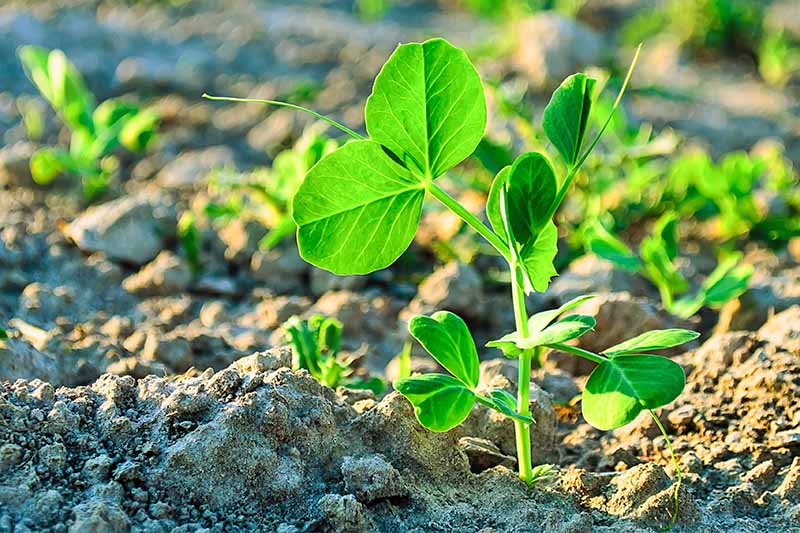
Once ready, plant them in already prepared soil about 3 inches deep. These should be 7.5cm apart without disturbing the roots. Firm in gently and water them at appropriate intervals. If your plants are grown in a length of gutter, simply dig a deeper trench and gently slide the compost and plant into it. Firm them in and then water them well. Place them in some space so they have great air circulation and get space to grow.
5. Caring For The Plants
Planting a pea plant is easy, but you have to care for them to get a good yield. Once your young pea plant has gotten used to the outdoor weather and has started to grow a little, you must not have to water them regularly unless there is a particularly dry spell.
However, you will have to start watering them once they start to flower. About two weeks from that, the pods will begin to swell. When this starts to happen, check the soil moisture and, depending on that, water if necessary. Whenever you are watering these plants, make sure you water the soil and not the leaves and shoots.
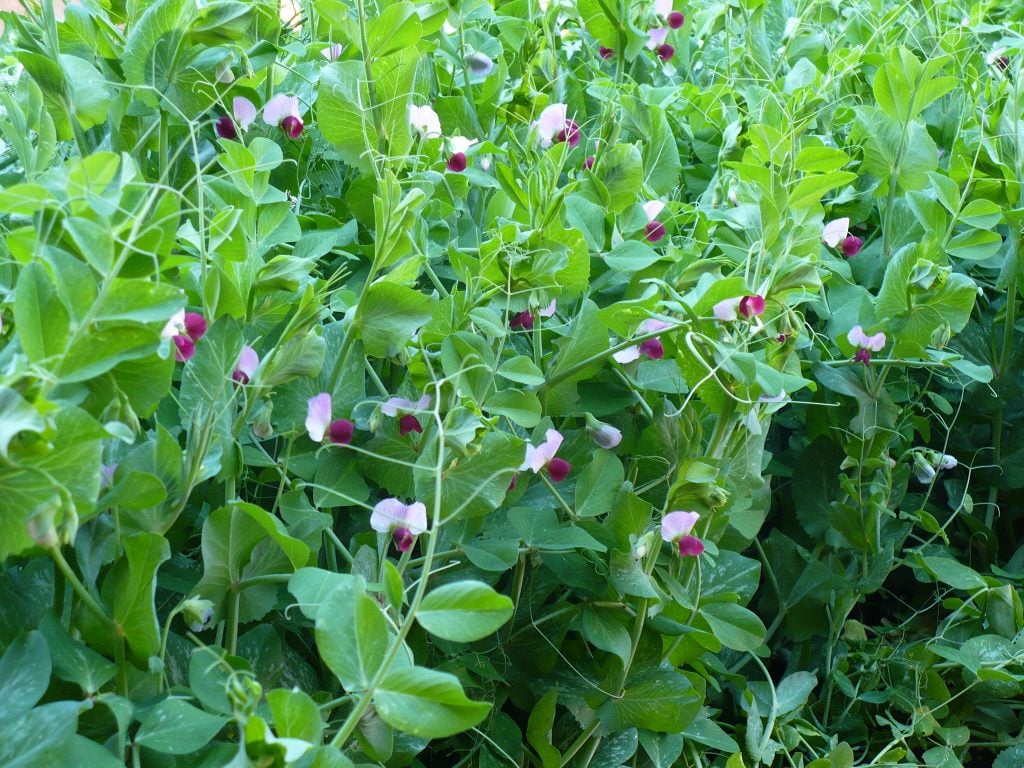
Another thing to do is to add some mulch to your plant. Add a thick layer of garden compost around the plant. This will stop the soil around the plants from drying out quickly. This way, your plants will stay alive longer and give you great yield.
Most pea plants need support to grow. They are climbers and hence need something that they can grow on. To achieve this, you can use netting or chicken wire attached to the bamboo canes. Make sure it’s tall and sturdy to support your plant well.
6. Harvesting
After putting in weeks of hard work, it’s time for you to reap the fruits of your labour, literally. Depending on the kind of variety you have used to plant your peas, you might be able to harvest them from June to October. You must pick the fruits regularly, or the plants will stop producing more flowers and pods. You can harvest these peas when the shelling/garden peas are filled and are still bright green.
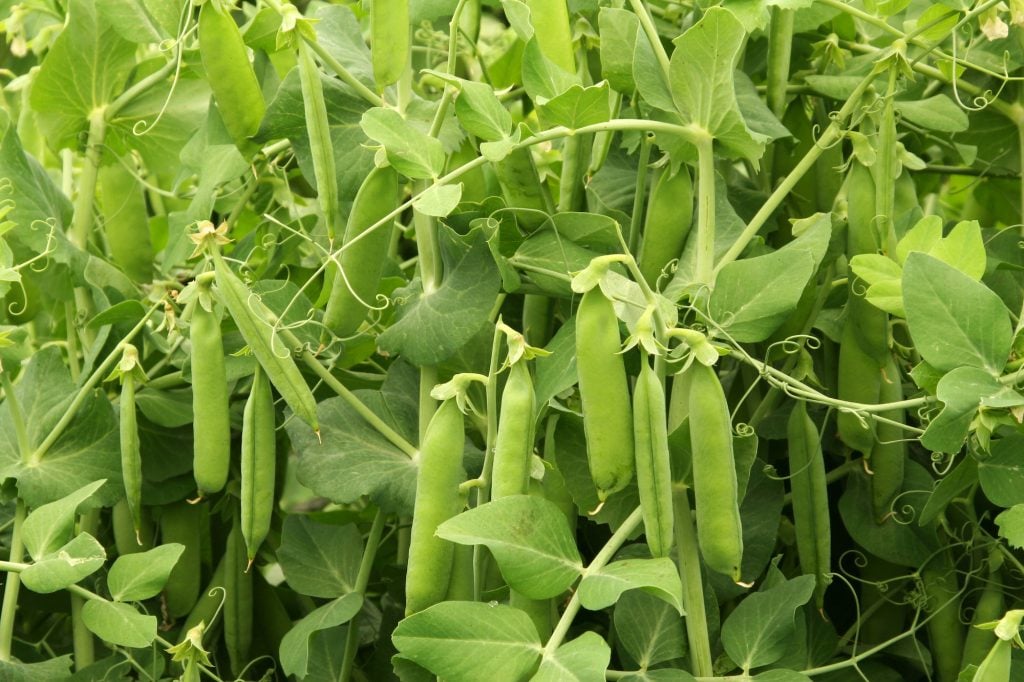
Make sure you are plucking the peas at the right time because the ones that have not matured will lack sweetness, and the ones that have over-matured will be starchy and have tough skin. Remember, English peas or garden peas mature rapidly. So, it is good to keep checking from time to time.
The best way to harvest the peas is by plucking them using your hands. Do not harm the vines when plucking them. Do not tug or jerk the pods away, either. Be tender with this process. The best time to pick these pees is in the morning when the dew has dried off them. One plant will crop for several weeks. So, keep reaping the fruits repeatedly.
7. Storing Them the Right Way

Your peas will taste the best when they have been freshly plucked. The sugar in the peas starts turning starchy if they are kept stored for a long time. However, if you want to store them longer, store them in a cold, moist place. If you want to store them in your refrigerator, keep them in a perforated plastic bag and refrigerate them. Peas can be stored in a fridge for 5-7 days, but if you want to elongate that, you must freeze them.
Are Peas Prone to Diseases?
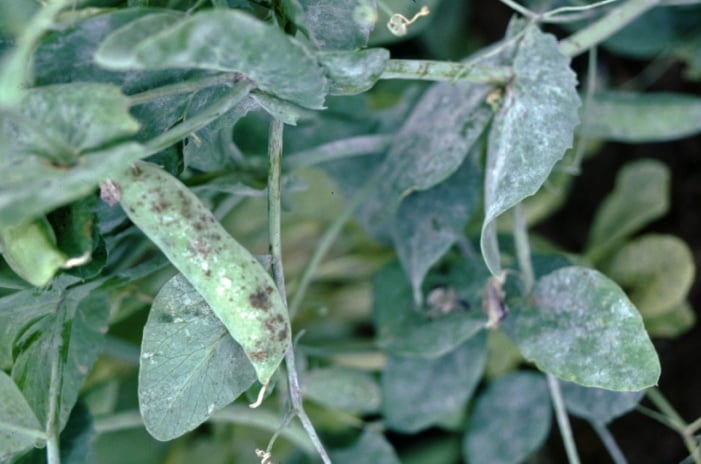
Peas are prone to diseases and pests in the early stages. Problems such as mice that eat newly sown seeds, slugs, and snails can arise. However, once they are established and grow, they are generally trouble-free. It is possible that you might have to face an issue of notches in the leaves, but worry not; that doesn’t generally affect the cropping.
With that said, one of the most common diseases in garden pea plants is, Aphids. These infest the plant and attack both leaves and roots. You can use organic, food-safe measures such as washing them off with a strong spray of water or insecticidal soap can solve your problem.
You can also grow your peas with companion plants that help keep these insects away. For example, you can plant rosemary beside a pea plant. It repels Aphids.
Conclusion
There is nothing like the taste of peas you have grown with your hard work. It is easy to grow them, and they are packed with vitamins.
While they do not need constant attention, they need a little bit of regular watering, support, and a particular temperature to grow.
Make sure you give them enough space to grow and water them carefully.
With the help of this guide, you will have great peas in a few weeks. So, grow and enjoy!
Frequently Asked Questions
Is It Easy to Grow Peas?
Yes, it is fairly easy to grow peas. As long s you provide enough moisture and save your plants from pests and diseases, it is an easy ride.
How Long Does It Take to Grow Peas?
Generally, it takes about two months to harvest peas. Depending on the variety, some plants might provide an early harvest.
Do You Have to Plant Peas Every Year?
Peas grow annually. That means once their life cycle is complete in one growing season, you will have to plant them again the next season.
Can I Grow Peas without a Garden?
The answer to this is yes. Since peas don’t have deep roots, you can grow them in pots and containers. However, make sure your pots have great drainage holes. A clay container is also a good option for planting peas. The wall of these pots lets the excess soil moisture evaporate through the walls. Choose a pot big enough to hold a full-grown pea plant.

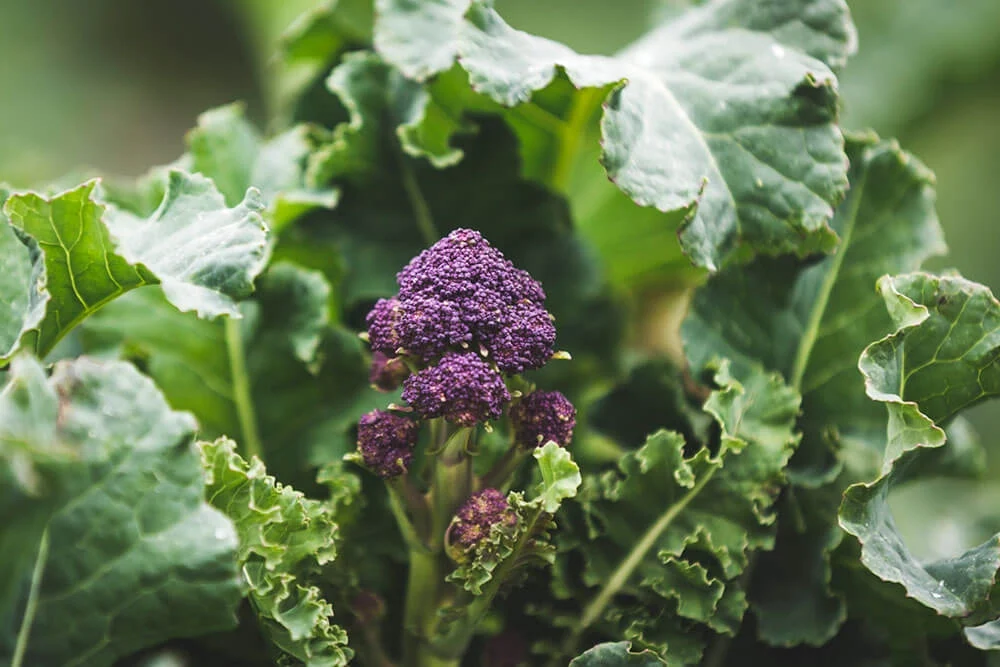
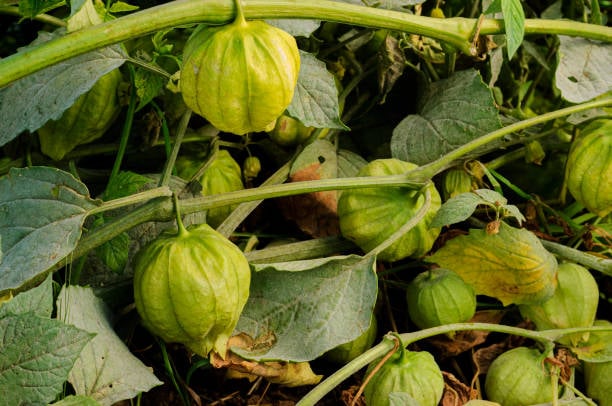

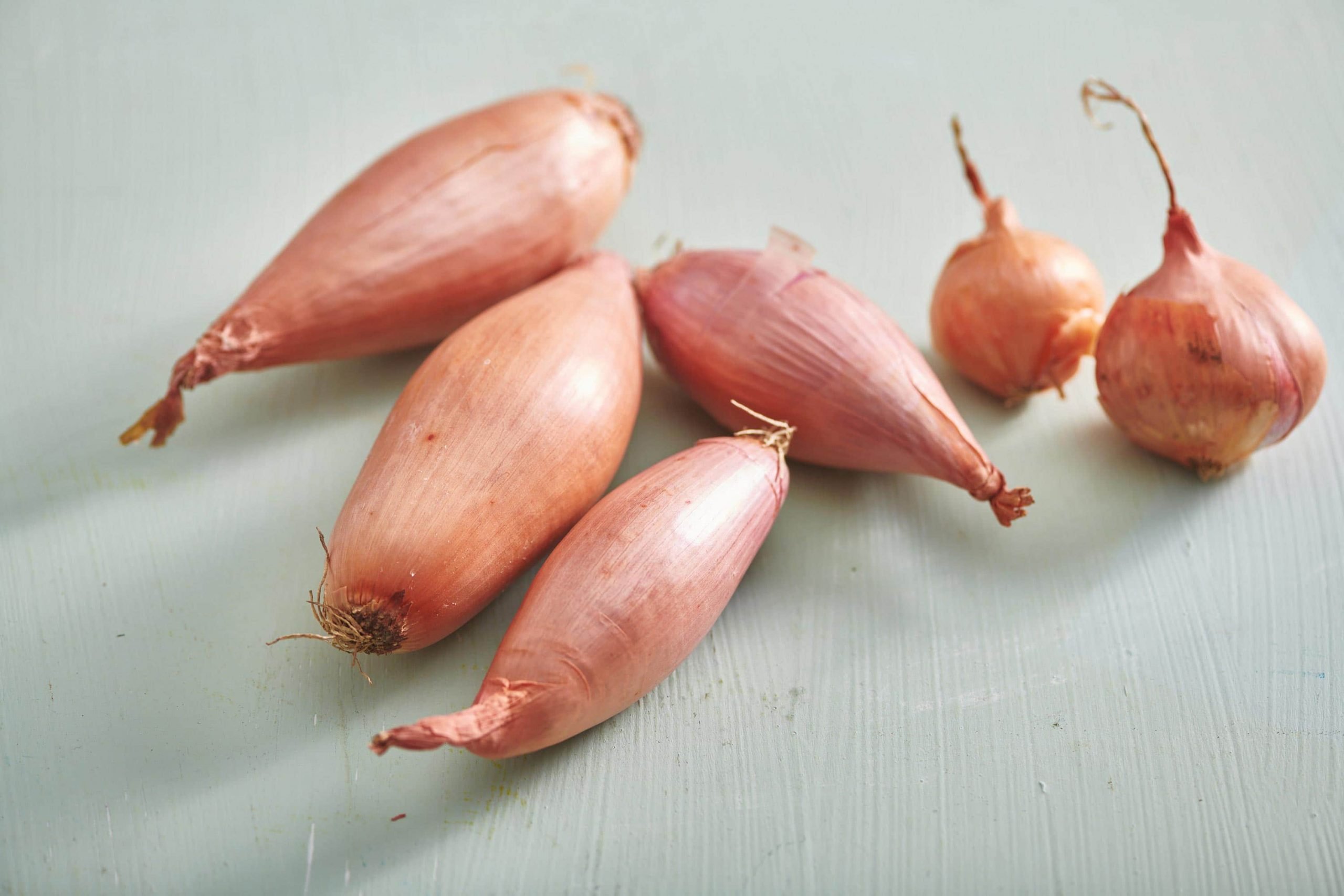
![How and When To Grow Lettuce Plants [UK]](https://staging.thearches.co.uk/wp-content/uploads/How-To-Grow-Lettuce-Plants-At-Home.jpeg)
![Growing Carrots: Guide to Planting, Harvesting, & Nutrition [UK]](https://staging.thearches.co.uk/wp-content/uploads/How-To-Grow-Carrots-scaled.jpg)